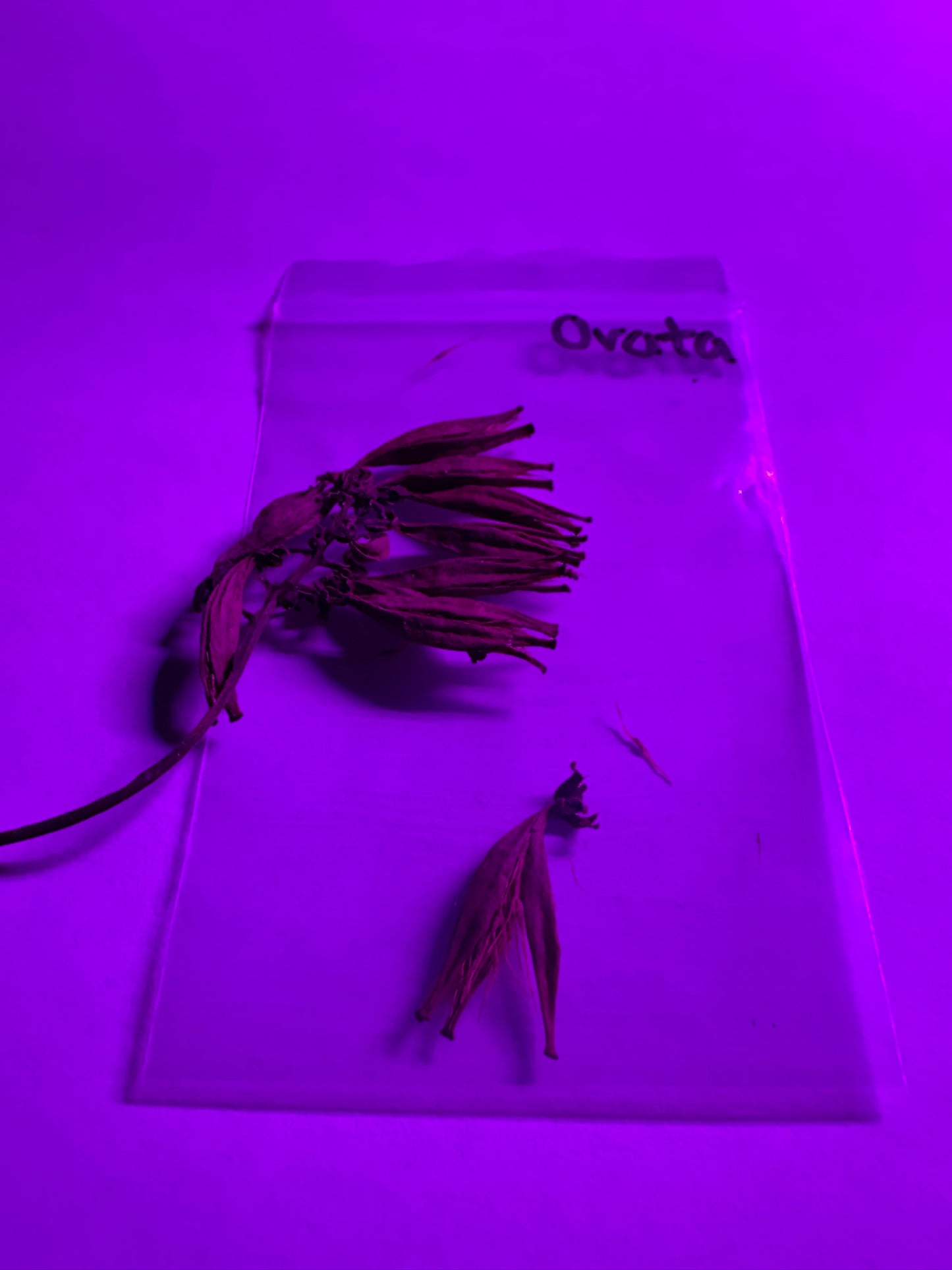The Nepenthes Seed Store
Nepenthes Ovata Seed Pod
Nepenthes Ovata Seed Pod
Couldn't load pickup availability
Contents 1 Nepenthes Ovata Seed Pod Approx. 20-50 seeds per pod
Nepenthes ovata – Seed Germination & Growth Guide
Difficulty: Moderate to advanced
Native habitat: Highland areas of Sumatra
Preferred climate: Cool and humid (highland conditions)
1. Preparing for Germination
What you need:
-
Sterile seed tray or shallow container
-
High-quality sphagnum moss (finely shredded), or a 1:1 mix of sphagnum and perlite
-
Distilled, RO, or rainwater (no tap water)
-
Humidity dome or clear plastic cover
-
Grow lights or bright filtered sunlight
-
Optional: fungicide (e.g., diluted neem oil or sulfur-based)
2. Sowing the Seeds
-
Moisten your substrate with distilled water until damp but not soaking.
-
Evenly scatter the seeds on top of the substrate. Do not bury them.
-
Mist lightly with water to settle them.
-
Optionally, spray a light antifungal solution to prevent mold.
3. Germination Conditions
-
Temperature: Day: 20–25°C (68–77°F), Night: 10–18°C (50–64°F)
Cooler nights are essential for highland species like N. ovata. -
Humidity: 80% or higher. Use a humidity dome or enclosed container.
-
Light: 12–16 hours of bright, indirect light daily. LED grow lights work well.
-
Air circulation: Provide occasional fresh air to reduce mold risk.
-
Timeframe: Germination can take 4 to 10 weeks, sometimes longer.
4. After Germination
Once seedlings emerge:
-
Keep conditions stable: high humidity, good airflow, consistent light.
-
Do not fertilize yet.
-
After 2–3 months, when seedlings have 2–3 small leaves, you can begin very light feeding using diluted orchid fertilizer (1/8 strength, monthly).
5. Transplanting
-
Transplant only after seedlings are large enough to handle (around 6 months).
-
Use small pots with the same sphagnum-based mix.
-
Avoid root disturbance.
-
Gradually acclimate them to slightly less humidity if growing outside a dome.
6. Ongoing Care
-
Water only with pure water.
-
Keep them in highland conditions: cool nights, high humidity, and stable lighting.
-
Feed sparingly (live insects or very diluted fertilizer).
-
Be patient: Nepenthes grow slowly, especially from seed
Share

